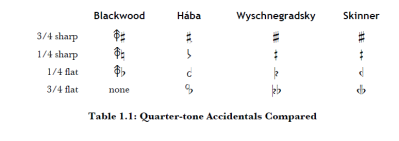Welcome to our forum. A Message To Our New and Prospective Members . Check out our Forum Rules. Lets keep this forum an enjoyable place to visit.
Currently working on errors from the latest (SimplePress) forum update. Many issues have been resoled and others are being worked on. Thank you for your patience.
 Topic RSS
Topic RSS



 (38 votes)
(38 votes) Regulars
 Offline
Offline






Regulars
 Offline
Offline








Regulars
 Offline
Offline






@ELCBK said
I assumed the pdf was for Scottish Highland style competition in Australia.The tune lists are Scottish & it includes Strathspeys.
Ok..wasnt sure if since "Reel" Thats what i figured but wanted to buckle up if not 😁
ELCBK said
Is there such a thing as an Irish Marching Pipe Band?
Waiting...😉
Regulars
 Offline
Offline








Regulars
 Offline
Offline






@ELCBK said
Well, unbelievable... turns out Irish Pipe & Drum Bands look & sound like Scottish Pipe & Drum Bands, but with plain looking kilts!Think all your Irish tune playing is safe. 🤣
😀 haha
yeah I was wondering how they could march with uilleann pipes..seems like they have to use the bottom end for something and always have pressure down on top of leg except to either play an ornament or notes.
Regulars
 Offline
Offline








I heard/watched Alasdair White play this wonderful set of Marches & Strathspeys with the Battlefield band on this old "Prairie Home Companion Special". I emailed Alasdair a while back, to see if he could give me info on the set... he got back with me - giving me titles and a great link to a HUGE archive of Piper-tune sheet music (over 6800 tunes)!
Btw, I posted about this somewhere else, before I emailed Alasdair, but I can't find it now - probably better here anyway.
 Captain Grant's March - there's a couple variations - think he played the one that says 'March' in the title.
Captain Grant's March - there's a couple variations - think he played the one that says 'March' in the title.
The Islay Ball Strathspey
Donal(d) Dun(n) - I believe he's playing this as a Reel.
Johnny's Wife - I think Alasdair is playing this as a Reel, but Cape Bretoners might still consider this a Strathspey (they are speedsters).
These tunes can be found at "Ceol Sean": FABULOUS (free) printable sheet music, pdf archive - Ceol Sean - Bagpipe Tune Archive - Master Index*
*note: these tunes must be interpreted/transcribed because Bagpipe tuning can make playing them on Violin sound different.
WOO HOO!
THANK YOU, Alasdair White!!! 🤗
- Emily
Regulars
 Offline
Offline






Regulars
 Offline
Offline








 @ABitRusty -
@ABitRusty -
I was surprised Alasdair said there were 4 tunes - when I first heard this, I thought the Battlefield band was playing only 3!
Just listened again for the last 2 (Donald Dun & Johnny's Wife) - I believe they are played as Reels.
Think he plays them too fast to be considered a March & Strathspey.
What do you think?
Regulars
 Offline
Offline






Regulars
 Offline
Offline








Member
 Offline
OfflineThanks for posting the video and the sheet music link.
Am also a big fan of Alasdair’s playing and in particular, the Captain Grants March from above. Looking at the sheet music though, is very different from the playing, would never have guessed they are the same. Seems to be an octave lower, and he’s added a lot of ‘dotted’ notes to get that Marchy feel. Sounds fantastic.
Regulars
 Offline
Offline








Ford Glass said
Thanks for posting the video and the sheet music link.Am also a big fan of Alasdair’s playing and in particular, the Captain Grants March from above. Looking at the sheet music though, is very different from the playing, would never have guessed they are the same. Seems to be an octave lower, and he’s added a lot of ‘dotted’ notes to get that Marchy feel. Sounds fantastic.

@Ford Glass -
Welcome to the forum!
Sorry, I should've given more info.
Alasdair definitely plays Captain Grant an octave down!
I don't think I've made enough mention of the Great Highland Bagpipes tuning - compared to concert pitch!
I just realized ALL the notation at the Ceol Sean site needs to be interpreted because of this! Alasdair is also a piper.
Excerpt from Wikipedia:
The scale of the chanter is in Mixolydian mode, which has a flattened seventh scale degree. The nine notes of the chanter scale are "low G, low A, B, C (sounds as a C♯), D, E, F (sounds as a F♯), high G, and high A". However, the A pitch of most pipers and pipe bands currently is somewhere around 470–480 Hz, which is actually sharper than standard pitch B♭4 at 466.16 Hz.
This can get confusing. Compared to the Ceol Sean site notation, I know he's playing A# (not A), and starts on the G string. It's possible he may have all strings tuned up a ½ step, maybe even cross tuned, but I haven't tried to look closely at his fingering in the video. I had already begun learning Captain Grant's March by ear when I was told of the sheet music - so just continued without thinking about it... and I was probably a bit too caught up on whether that last tune was being played like a fast strathspey or a reel. (lol)
I don't have time right now with Holiday stuff, to try to transcribe it - I still haven't used musescore or Notion - Notion Mobile App Thread. Be great if you are able to! Otherwise, between the 3 versions notated at Ceol Sean & what I said above, hope you can figure it out.
If you need more help, let me know - someone else here might also be able to help.
THANK YOU SO MUCH for pointed out this issue! Hard enough for people to learn tunes - I don't want to add to the confusion!
- Emily
Regulars
 Offline
Offline








Regulars
 Offline
Offline






Regulars
 Offline
Offline








Member
 Offline
Offline@Mouse., thanks, don’t really want the fuss of a new thread about me.
But will say that am originally from Scotland, played the violin as a kid, and started again at the beginning of the pandemic after a 35 year break. Have been taking online fiddle lessons from a Scottish teacher, and trying to play in that style.
@ELCBK., thanks for the helpful info. Not quite sure how to address the piper tuning, but was trying to write out the notes, so I have something ‘on paper’. If am allowed to?, I can post my very rough version here.
Regulars
 Offline
Offline








@Ford Glass -
I would encourage you to place your introduction in the Introduce Yourself Section just because all the regulars will want to welcome you - we're all overly friendly here. 😊
Piper tuning - I can't believe it's taken me this long to open this can of worms!
I try to be thoughtful of others who depend on 'the dots', but I rarely need to check any. I have a 5-string Viola & Violin, besides just playing what I hear, I also move tunes around to different keys to make the best use of 5 strings - so, when I do read notation, I confess it's more automatic for me to see a treble clef staff or alto clef staff as intervals. Likewise, looking at the piper music, I would just determine what I hear the tonic to be and follow the intervals - so, I've let sleeping dogs lie. Now, you've given me reason to try to sort out some conflicting information that's been bothering me - my curiosity is really piqued.
The Wikipedia quote in the previous post:
The scale of the chanter is in Mixolydian mode, which has a flattened seventh scale degree. The nine notes of the chanter scale are "low G, low A, B, C (sounds as a C♯), D, E, F (sounds as a F♯), high G, and high A". However, the A pitch of most pipers and pipe bands currently is somewhere around 470–480 Hz, which is actually sharper than standard pitch B♭4 at 466.16 Hz.
Wikipedia continues...
So the scale actually sounds closest to A♭, B♭, C, D, E♭, F, G, A♭, B♭, and can be considered a transposing instrument in D-flat major.
This seems pretty contradictive to me! I mean, what about the A sounding like A#, C sounding like C# and F sounding like F# they were talking about?
I just learned about transposing instruments for the first time this year. I wanted to learn to play "Boogie Woogie Bugle Boy" and found a great play-along video, but the score didn't match what I was hearing, so I inquired... mind boggling - more discussion on transposing instruments started in Post #54 Traditional Fiddle Intonation vs. Classical Violinist Intonation Thread - continues on the 4th page with microtone notation, might need to use for some of this Piper music to be accurate.
Looking at the Chiff & Fipple website, I think it's best to do a side-by-side comparison for piper's notation (PN) vs what we hear as concert pitch (CP) on Violin, if we see notation that hasn't been transposed - I'm sticking with flats here, these are the GHB pitches to play on violin:
- Read G3 (PN) = it's A3b (CP) on G string
- Read A3 (PN) = it's B3b (CP) on G string, but maybe a microtone closer to B3
- Read B3 (PN) = it's C4, middle C (CP) on G string
- Read C4 (PN) = it's D4 (CP) open D string
- Read D4 (PN) = it's E4b (CP) on D string
- Read E4 (PN) = it's F4 (CP) on D string
- Read F4 (PN) = it's G4 (CP) on D string
- Read G4 (PN) = it's A4b (CP) on D string
- Read A4 (PN) = it's B4b (CP) on A string

Anyway, this should help. I'll keep an eye out for more info - didn't want to bother Alasdair White again until next April's Fiddle Hell, if I don't have to.
For transposing, I was actually thinking this would be a good excuse for me to try out the "Notion App" I mentioned earlier, to notate what I hear being played - just to make sure, but I won't have undivided time for at least a few more days.
Please feel free to share what you come up with!
- Emily
1 Guest(s)


 Log In
Log In Register
Register



















